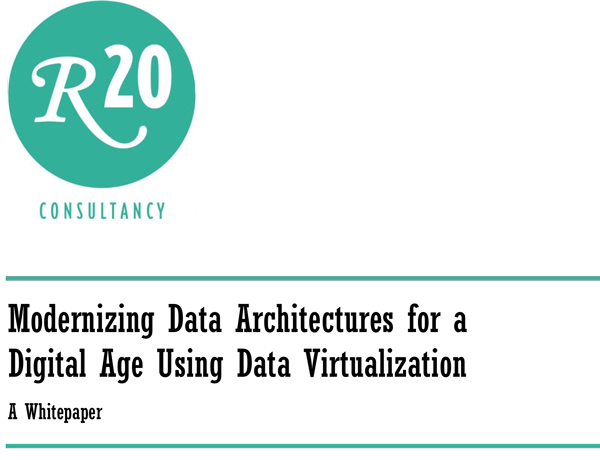
For a Digital Age Using Data Virtualization.
Introduction
Countless organizations have started data architecture modernization projects. These projects are initiated because they understand the increasing business value of data. By using it more effectively, more widely, and more deeply they can improve and optimize business processes and decision-making processes. It is regarded a requirement in order to stay competitive, cost-effective, and efficient. In essence, organizations want and need to become more data-driven in order to effectively participate in the emerging digital economy.
Current data architectures are not sufficient and need to be modernized.
They understand the potential business value of data, but equally they understand that the architecture of the existing data delivery systems, such as the data warehouse (and to some extent their data lakes), is not sufficient. These systems that rely on physical data movement and redundant data storage do not always have the right performance, scalability, and functionality. In order to future-proof data architectures for the next evolution of analytics their current systems need to be modernized.
New Business Requirements
A wide range of reasons exists why organizations need to modernize, such as enabling self-service reporting and dashboards; ensuring advanced analytics are equipped to work with (near) real-time data instead of yesterday’s data; combining internal with external data coming from one of the many public, commercial, or social data sources to enrich analytical insights; deploying AI/machine learning/data science to discover patterns or trends in the data that may improve decisions, automate, or optimize business processes; and deploying IoT technology to monitor machines and business processes in much more detail to improve efficiency and reduce risk.
Additionally, other types of requirements have impact on BI systems as well, such as the impact of new regulations on data protection and privacy. Not everyone is allowed to see all the personally identifiable information (PII) anymore, some data needs to anonymized, and ‘the right to be forgotten’ needs to be implemented somehow. More business users and regulators require that the entire ‘factory’ that delivers them data becomes more transparent, which implies more up-to-date data catalogs and metadata.
Modernization and not Replacement
Modernization is normally not a simple matter of deploying more computer power; for example, by replacing one tool with another, by replacing the current database server with a faster one; or, by migrating data to the cloud. There is no quick fix. Nor is replacing the entire architecture with a new one a viable alternative. This is too risk prone. For modernization to be effective, it must be seamless. The current business operations cannot falter because of this exercise. Modernization of a data architecture is not a simple replacement of one architecture with a new one, but involves the improvement of existing modules and removal of weak modules.
Modernization of data architectures must be a seamless process.
This Whitepaper
This whitepaper describes how data virtualization can help provide a seamless evolution to the capabilities of an existing data architecture. With data virtualization data architectures can be modernized without disturbing the existing analytical workload. Basically, data virtualization can extend an existing data architecture to more quickly unlock and exploit all the existing data, to present more low latency data, and to support new forms of data usage, such as data science, without the need for mass replacement.
Data virtualization can help to modernize data architectures without mass replacement.
The data lake, self-service BI, cloud technology, and data catalog are often mentioned in modernization projects. The whitepaper also describes how data virtualization can help to simplify inclusion of such concepts in a new and future-proof data architecture.
Download the complete whitepaper alongside.

